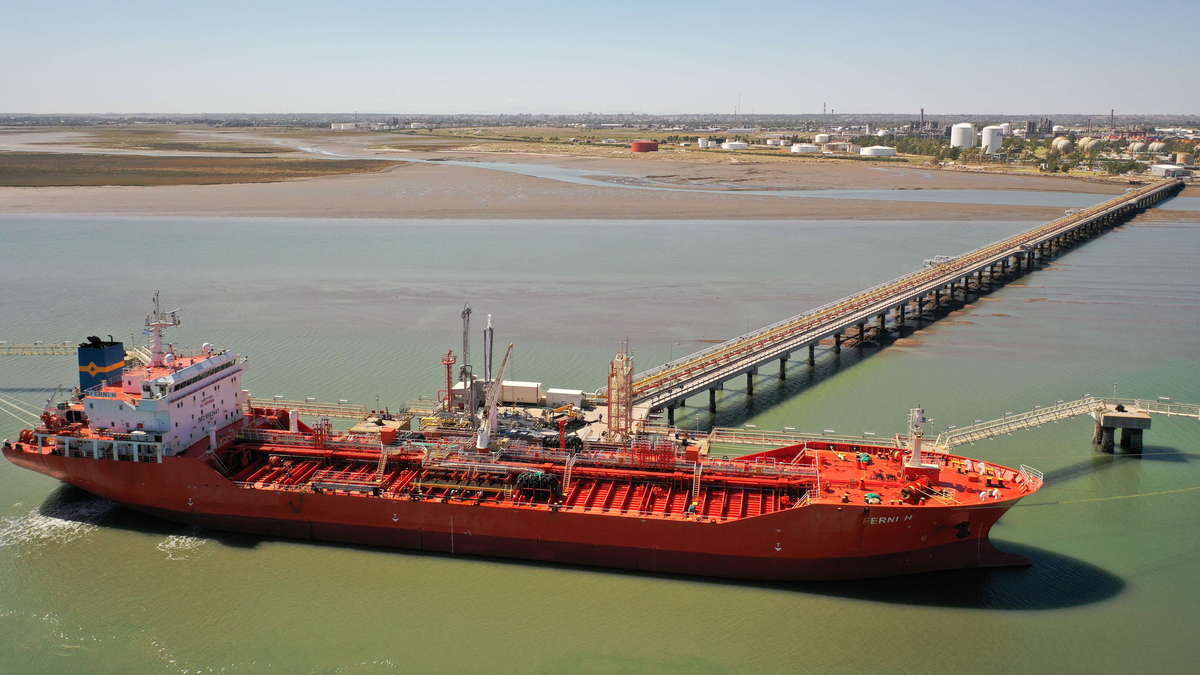The oil-petrochemical complex recorded record exports in the first half of 2024 and displaced the automotive industry as the second complex that made the most foreign salesbehind soybeans. The change was mainly explained by the good performance of crude oil shipments.
According to a report published this Tuesday by INDEC, The main export sector between January and June was soybeans and its derivatives, with total sales of US$9.760 million25.7% higher than the number that had been verified in the same period of the previous year. Likewise, when subtracting imports, a net export of US$7.999 million was observed.
The latter was the result, in addition to the improvement in sales, of a 48.7% year-on-year collapse in purchases. It is worth remembering that 2023 was crossed by one of the worst droughts in historywhich forced the country to increase its imports of soybeans to make products such as soy flour, given the local shortage.
The oil sector displaced the automotive sector in the export table
The main novelty of the survey was that Second place was occupied by the sector comprising the oil, gas and petrochemical products subcomplexes.In this case, exports jumped 25.8% year-on-year to add up to about US$5.123 million, the absolute maximum of the series started in 2002.
This increase was driven by a 60.2% jump in crude oil salesmainly destined for the United States and Chile. The increase in sales of fuel and lubricant supplies to ships and aircraft also had an impact.
Thus, the oil segment significantly increased its net exports, as imports fell by 55.9%. In a similar vein, The trade balance in gas was reversed as the 2023 deficit turned into a surplus this year, although this occurred despite a 13.1% year-on-year drop in external sales, which was more than offset by a 58% drop in purchases.
Meanwhile, in petrochemistry There was a deficit in the first six months of the year, although the negative balance was reduced compared to the previous year.
The good performance of the hydrocarbon sector, driven by the production boom in Vaca Muerta, caused its exports to exceed those of the automotive industrythat In the first half of the year, it suffered year-on-year declines in its sales both vehicles for the transport of goods and vehicles for the transport of passengers and auto parts.
Exports have grown so far in 2024, after the deep drought of 2023
In aggregate, the sector exported US$3,757 million, a 9.8% below the 2023 figureDespite this decline, the trade deficit in this sector narrowed as a result of an even greater decline in imports.
In total, exports reached around US$38,176 million in the first half of the year, with a year-on-year increase of 14.0%. This semester was characterized by a price dropwhose index decreased by 7.7%, and a increase in quantitieswith an index increase of 23.5% compared to the first six months of the previous year. In addition to the sectors mentioned above, it is worth highlighting the extraordinary wheat complex exports grew by almost 150%also marked by the drought of 2023.
According to INDEC figures, these were the 10 main export complexes in the first half of the year:
- Soybean complex: US$9.76 billion (25.6%)
- Petroleum-petrochemical complex: US$5,123 million (13.4%)
- Automotive complex: US$3,757 million (9.8%)
- Corn complex: US$3,725 million (9.8%)
- Wheat complex: US$1.901 million (5%)
- Bovine meat and leather complex: US$1,771 million (4.6%)
- Gold and silver complex: US$1,531 million (4%)
- Fishing complex: US$970 million (2.5%)
- Fruit complex: US$891 million (2.3%)
- Barley complex: US$758 million (2%)
Source: Ambito
I am a 24-year-old writer and journalist who has been working in the news industry for the past two years. I write primarily about market news, so if you’re looking for insights into what’s going on in the stock market or economic indicators, you’ve come to the right place. I also dabble in writing articles on lifestyle trends and pop culture news.




